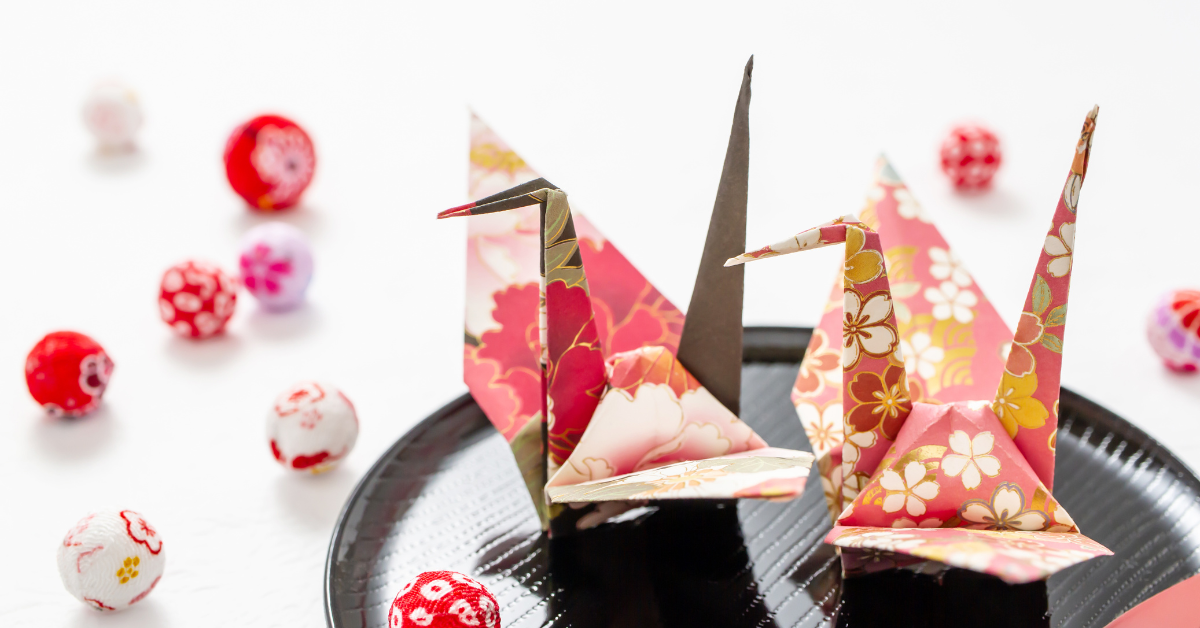Origami is not just paper folding. It is a traditional Japanese art that teaches patience, creativity, and harmony with nature. From cranes that bring peace to modern foldable designs in space engineering, origami continues to inspire people worldwide. This article explains its meaning, history, types, and modern applications to deepen your cultural understanding.
WHAT IS ORIGAMI
ORIGAMI MEANING AND CULTURAL SIGNIFICANCE
Origami is the Japanese traditional art of folding paper into shapes without cutting or glue. The word comes from ori meaning fold and kami meaning paper. Origami transforms a single sheet into cranes, flowers, boxes, and animals. Beyond craft, it expresses gratitude, prayers, and cultural messages. For example, cranes are folded for health, lotus flowers for ceremonies, and boxes for tea gatherings. Origami models reflect seasonal nature, embodying Japanese philosophy of harmony with surroundings. Recently, origami is also used in cognitive training to enhance spatial recognition. Learning origami is learning Japanese respect, focus, and silent communication through art.
| Japanese Word | English Meaning | Cultural Context |
|---|---|---|
| Ori | Fold | Folding paper carefully |
| Kami | Paper | Used in rituals and arts |
| Tsuru | Crane | Peace and longevity |
HISTORY OF ORIGAMI
ORIGAMI ORIGIN AND DEVELOPMENT
Origami originated in Japan after paper came from China in the 6th century. Paper was rare and sacred, used for rituals at shrines. During the Edo period, origami became entertainment among common people. Children folded boats and frogs while adults folded cranes to express wishes. In the Meiji era, origami entered schools to teach symmetry and discipline. After World War II, Sadako Sasaki’s thousand cranes became a symbol of peace. Akira Yoshizawa developed wet-folding for sculptural forms. Today, origami combines tradition with science and education worldwide. Its history is a mirror of Japanese spirituality, precision, and creativity.
| Period | Development | Feature |
|---|---|---|
| 6th century | Introduction from China | Sacred paper use |
| Edo | Spread among people | Recreational art |
| Meiji | School education | Geometry learning |
| Postwar | Global recognition | Peace symbol cranes |
TYPES OF ORIGAMI
VARIETY OF STYLES AND CHARACTERISTICS
Origami has types that show its range. Traditional origami includes models passed down like cranes and kabuto, symbolising luck and protection. Modular origami combines units into spheres and stars. Wet-folding uses damp paper for curved forms. Pureland origami uses simple folds for accessibility. Tessellation origami creates repeating patterns. Action origami includes moving models such as flapping cranes or jumping frogs. Each type combines cultural meaning with technical design.
| Type | Feature |
|---|---|
| Traditional | Cranes, frogs, kabuto |
| Modular | Units forming geometric shapes |
| Wet-Folding | Curved sculptural forms |
| Pureland | Easy folds for beginners |
| Tessellation | Repeating patterns |
| Action Origami | Moving models like jumping frogs |
| Origami Type | Difficulty Level | Main Purpose |
|---|---|---|
| Traditional | Beginner to Intermediate | Culture and wishes |
| Modular | Intermediate | Decoration and design |
| Wet-Folding | Advanced | Realistic art pieces |
BENEFITS OF PRACTICING ORIGAMI
IMPROVEMENT IN MIND, BODY, AND CULTURE UNDERSTANDING
Practicing origami sharpens concentration, patience, and precision. In education, it develops fine motor skills and geometric understanding. Therapists use origami for rehabilitation, training memory and movement. Psychologically, folding calms the mind, similar to meditation. Designers learn folding logic for structural innovation. Origami nurtures cultural understanding by learning the meanings of cranes, kabuto, and flowers. These benefits prove origami enhances cognitive growth, emotional balance, and creativity.
| Benefit | Description |
|---|---|
| Concentration | Focus on precise folds |
| Patience | Repetitive careful steps |
| Creativity | Design new models |
| Therapy | Cognitive and motor training |
| Cultural Understanding | Learn Japanese values |
POPULAR ORIGAMI MODELS AND MEANINGS
SYMBOLISM BEHIND COMMON MODELS
The crane symbolises peace and long life. Folding a thousand cranes grants wishes, seen at temples. The lotus flower symbolises purity, folded for New Year and offerings. Kabuto represents warrior strength, folded for Children’s Day. Butterflies stand for transformation and happiness, used in weddings. Masu boxes hold sweets in tea gatherings, reflecting daily simplicity. These models communicate Japanese thoughts and emotions silently through paper.
| Model | Meaning | Usage |
|---|---|---|
| Crane | Peace, longevity | Senbazuru offerings |
| Lotus | Purity, enlightenment | Festivals, temples |
| Kabuto | Strength, protection | Children’s Day |
| Butterfly | Transformation, happiness | Weddings |
| Masu Box | Practical daily use | Tea gatherings |
ORIGAMI IN MODERN LIFE
APPLICATIONS IN DESIGN, TECHNOLOGY, AND EDUCATION
Origami influences modern technology and design. Foldable solar panels use origami principles for compact storage. Architecture applies folding in shelters and kinetic roofs. Medical devices like stents expand using origami structures. Robotics uses folding for strong flexible parts. Fashion integrates origami pleats for structure. In education, origami teaches STEM efficiently. International competitions promote cultural exchange. Workshops teach folding skills with cultural stories, connecting people worldwide.
| Application | Field | Example |
|---|---|---|
| Space Engineering | Foldable panels | Satellites |
| Architecture | Collapsible shelters | Emergency housing |
| Medicine | Expandable stents | Heart surgery |
| Robotics | Foldable parts | Micro-robots |
| Fashion | Pleated design | Structured garments |
CONCLUSION
Origami is not merely folding paper into shapes. It carries Japanese history, spirit, and philosophy, teaching mindfulness, patience, and creativity. Its influence extends to engineering and global education. Learning origami connects foreigners to Japanese harmony with nature and silent beauty. Whether folding a crane or designing tessellations, origami inspires ideas and connects people globally through the quiet wisdom of creating meaning from a single sheet.






